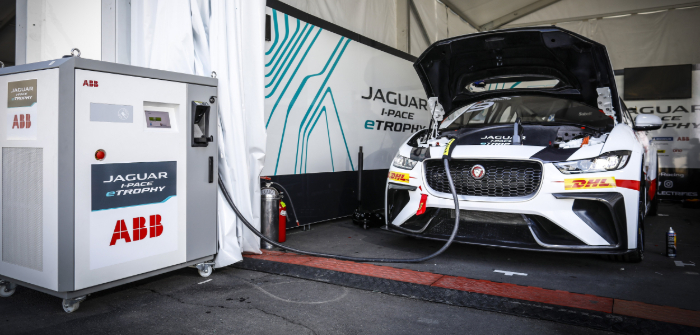Tarak Mehta, ABB’s president of electrification and member of the group executive committee, reveals how motorsport is providing a proving ground for the company’s road car technologies
Why did ABB decide to become a sponsor of the FIA Formula E?
We are a pioneering technology leader and ABB’s goal is to bring the possibilities of electrification to the masses. We aim to do so in two key ways. The first way is to realize what the performance possibilities of electromobility are, and the second is to improve awareness of the infrastructure needs. For infrastructure we need utilities and governments to invest, so it’s a chicken and egg problem. We also need to think about the production of renewable energy and we are a significant player in this space through the support we provide to wind, solar, hydroelectric generation and bio-gas industries.
How has ABB’s involvement in motorsport been beneficial from an R&D perspective?
When you’re working at the limits and continuously pushing the boundaries of technology it’s of course beneficial. If we take the Jaguar I-Pace eTrophy Championship as an example, we are the provider of the charging technology to that series. The JLR engineers spent one week testing in the desert in 33°C and then a week later they were in the Arctic Circle evaluating the latest I-Pace iteration. That wasn’t in the spec but it enabled us to test our technology. It’s certainly pushing the boundaries of energy storage, energy recovery, energy optimization, speed of charging – and this will cascade down to the masses just like Formula 1 technology has done.
How does ABB aim to bring the benefits of electromobility to the masses?
We are focused on automation and digitization – so how we can help the world take advantage of electrical and automation technology to make a big difference, become more efficient, and make more money. In addition to the Formula E, we’re also supporting the Jaguar I-Pace eTrophy Championship because that’s closer to the consumer, they can purchase an i-Pace. For that race, the specially designed charging infrastructure is very compact, and can be used to charge in space-limited locations, quickly.
We also working with 23 automotive and equipment manufacturers to develop solutions we believe are crucial for infrastructure. Currently we see the German OEMs making the single biggest investment in infrastructure, and converting their vehicle portfolios. Overall we see the biggest change happening in the bus segment, with infrastructure being put in place by the governments, which clearly see the benefits of electrical propulsion.
One of the biggest issues of electromobility is the interconnectivity of all the different providers and different standards. How do you see this developing?
We believe only one or two standards will be needed worldwide. We are trying to focus the governments and standards bodies to enable easier use for consumers and significantly lower infrastructure investments.
What work are you doing with vehicle-to-grid technology at the moment?
We know that the complexity of the grid will increase. We’re working with grid distribution companies to discover the best way to synchronize the needs of the grid with the needs of charging – whether it’s demand response or demand charges. We’re also looking at if there are opportunities to use the battery and encouraging the dialog between utilities and car manufacturers.
Today’s standards are only one way – grid-to-vehicle. We understand the battery behavior and the charging behavior and we want to bring the two together. There is one big challenge however – the performance of the battery as a function of the number of charges and discharges – but there’s a fantastic opportunity to balance loads and produce renewable energy. The problem is not producing it, it’s storing it.
Do you foresee any new battery chemistries emerging on the mass market in the next 10 years?
At the moment we believe lithium-ion is the only viable chemistry on a mass scale, but we’ve been working with some Asian companies on other chemical compositions that are attractive and possibly even safer. We don’t see anything revolutionary emerging in the next five to 10 years though. Solid state is interesting, but due to the current cost, energy density and safety, we don’t see it being viable on a mass scale.



